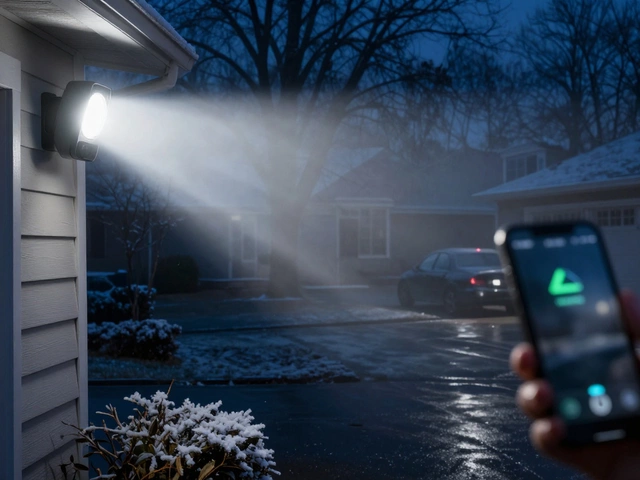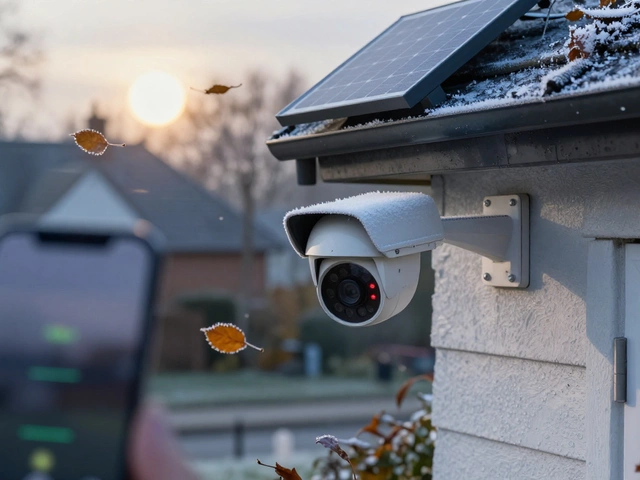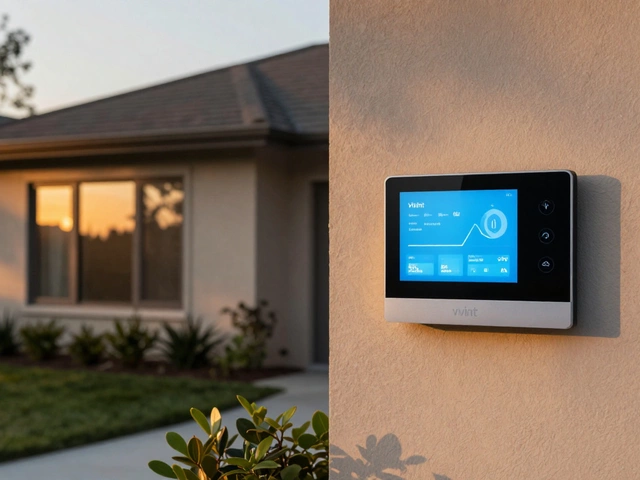Ever feel like someone could be watching you, even when you’re in your own living room? It’s not paranoia—hacks of Wi-Fi security cameras are happening every day. The convenience of peeking at your front porch from your phone is tempting, but there’s a side to this tech that nobody likes to talk about. Once you toss a Wi-Fi camera into your house, your home is just a little less private. The question isn’t if Wi-Fi security cameras are vulnerable…it’s how risky they actually are for your home and your everyday life.
The Hidden Dangers of Wi-Fi Security Cameras
So, let's be real—Wi-Fi cameras sound like a tech upgrade dream. No holes in the wall, no fiddly cables to pull around corners. But as easy as they are to install, Wi-Fi cameras can open up insecurity you never signed up for. Hackers aren’t some movie myth—they’re targeting unsecured networks right now, scanning the globe for easy pickings. In 2022 alone, researchers at Norton found that over 1.5 billion IoT devices, a group that includes Wi-Fi cameras, were breached or exposed through botnets. Now, if you’re thinking, 'My camera’s too boring for anyone to care about,' think again. Hackers don’t care if your living room is messy; they’re after exploitable networks to join or use as an entry point to your other devices.
It’s not just hackers you have to worry about. Cheap or off-brand cameras can come with built-in backdoors—basically, an open invitation for strangers to lurk. After the massive Ring camera incidents of 2019, where families found their cameras talking back to them in scary voices, the risks of poor password hygiene became dinner-table stories everywhere. Even the FBI got involved, issuing a public warning about Wi-Fi camera vulnerabilities. The truth is, if a camera’s got a weak default password (think: “admin” or “123456”), it’s practically begging for trouble. A strong, unique password is your first line of defense—but strangely, it’s a step many people skip.
But there’s more. Your Wi-Fi camera can collect a pile of your personal data—sometimes with or without your permission. Some companies store video footage in unsecured cloud servers. Hackers get in, and suddenly, your private life is streamed to whoever’s shopping for stolen data. In January 2023, security researchers at Cybernews found over 3,000 home security camera feeds available online from poorly secured devices. That's not just creepy, it's dangerous—kids’ rooms, front doors, and even home offices were visible to complete strangers.
Manufacturers aren’t always quick to update software. Some Wi-Fi cameras can go years without a security patch. Without regular updates, those holes in the software—called vulnerabilities—stay wide open. Even big brands aren’t immune: in March 2024, a widely publicized flaw in a major smart home camera line left thousands of users at risk for weeks until a patch rolled out. The longer your camera sits on the shelf without updates, the greater the chance it’s already exposed to a zero-day attack (which is hacker-speak for a vulnerability no one else knows about). Want better odds? Picking a camera from a company that pushes regular firmware updates is a must.
If your Wi-Fi isn’t locked down with strong encryption (like WPA3), your data is at risk every time your camera talks to your router. Intercepted footage isn’t just something to worry about in spy movies. It only takes a neighbor with basic know-how to grab unencrypted streams—meaning your backyard pool parties and holiday dinners might not be as private as you thought.
Here’s a quick look at how risky Wi-Fi cameras can actually be, based on widely reported incidents:
| Incident | Year | Severity | People Impacted |
|---|---|---|---|
| Ring Camera Hacking/Harassment | 2019 | High | Thousands |
| Cloud Database Leak - Lack of Camera Password Protection | 2021 | Medium | 3,000+ cameras |
| Major Brand Firmware Vulnerability | 2024 | Critical | Tens of Thousands |
Physical attacks aren’t off the table either. Wi-Fi cameras can be jammed, blocked, or disabled by a signal jammer device, which you can buy dirt cheap online. Professional burglars, believe it or not, watch YouTube just like anyone else, and they know how to use these gadgets to keep your cameras blind while they slip in and out.
The final kicker? Insurance companies have started asking what kind of security system you use. A hack that leads to a break-in could impact your claim, or even void it if you didn’t take ‘reasonable measures’ with your tech. The convenience of Wi-Fi cameras comes with a trade-off—privacy for ease, oversight for comfort. The risks, honestly, are only getting bigger as these cameras get smarter and more connected to everything else you own.
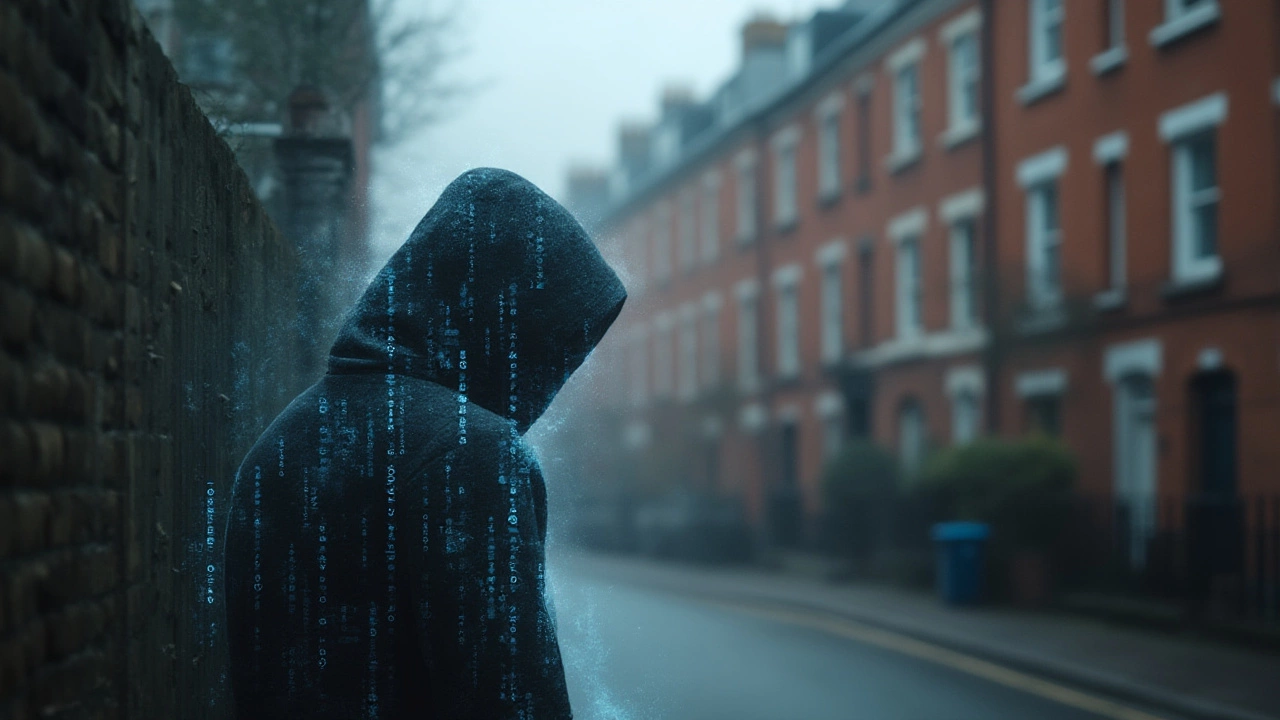
How Everyday Use Can Compromise Your Home
You’d think once it’s up and running, your Wi-Fi camera would just fade into the background. But everyday stuff—ordinary mistakes—can put your security at risk. Most people reuse passwords. It’s quick, it’s easy, and it can be disastrous. When your Netflix password leaks in a breach, and it’s the same one you used for your home security camera? That’s like handing out keys to your front door. In fact, a 2023 Google survey found that 65% of people reuse their passwords across multiple accounts. “Set it and forget it” isn’t a safe strategy with your home eyes in the sky.
Placement matters, too. Cameras staring at windows will often send alerts every time a car passes by—a recipe for alert fatigue. Before long, you’ll start ignoring those notifications. That’s exactly when you’ll miss something real. Also, unprotected placements, like on porches or driveways, are easy targets for physical tampering or outright theft. Want to keep your camera safe? Stick to higher, less obvious spots, and avoid pointing them toward busy streets unless you really need that footage.
Connection issues happen more often than you think. A Wi-Fi camera needs a solid, stable network. Interference from microwaves, cordless phones, or thick walls can make feeds freeze or glitch out. When you need the footage most—like during a break-in—that buffering wheel of doom might be all you see. As of 2022, data from Consumer Reports revealed that nearly 30% of Wi-Fi camera owners experienced dropped connections or lagging video quality at least once a month. Outages aren’t always your ISP’s fault—it could be the camera itself, or even just network congestion.
Let’s talk about privacy settings. Your camera might be streaming to the cloud by default, with default sharing options wider than you realized. Did you know many Wi-Fi cameras allow remote viewing from anywhere in the world? That’s amazing if you want to check in on your dogs while you travel, but it also means anyone with the right credentials can do the same. Not every family member deserves access to every angle. Lock down those permissions. Double-check which email addresses and user accounts you’ve authorized, and remove anyone who doesn’t absolutely need it.
Your storage plan is another angle most people don’t think about. Saving everything to the cloud means it’s out there—good, if your camera gets stolen, but risky if that cloud account is compromised. Local storage (like a microSD card in the camera) keeps your data closer, but if someone swipes the camera, the evidence is gone, too. Mix it up if you can—choose a camera that lets you store footage both locally and in an encrypted cloud.
Sharing video clips with neighbors or police can create its own problems. Some camera apps make it easy to send footage, but that footage can bounce around message threads and emails with no control over who sees it next. One accidental upload, and your family’s daily life could be passed around online in minutes. A famous case in 2022 involved a neighbor group sharing home camera clips to help catch a package thief—only to see their own family moments land on social media, sparking a privacy backlash.
This stuff is even more important if you use your cameras as baby monitors, which is super common. Stories pop up every year of parents who hear strangers’ voices coming from their nursery camera, usually the result of guessable passwords or old firmware. Want to avoid that? Change passwords every few months, and never reuse them anywhere else. Keep your camera app up to date—those little “please update” nags actually can save your privacy.
| Common Daily Risks | Potential Impact |
|---|---|
| Password reuse | Easy unauthorized access |
| Poor placement | Tampering, theft, false alerts |
| Wi-Fi interference | Video lag, outages |
| Wide sharing permissions | Unwanted viewers |
| Cloud-only storage | Data leaks |
There’s one last gotcha: if your camera supports voice commands (like “Hey Google, show me the backyard”), it could be recording more than you think. In 2023, Consumer Technology Association data showed 18% of Wi-Fi cameras have voice activation, opening another possible privacy gap. Disable voice activation unless you really need it—and check those privacy policies for what happens to your voice data.
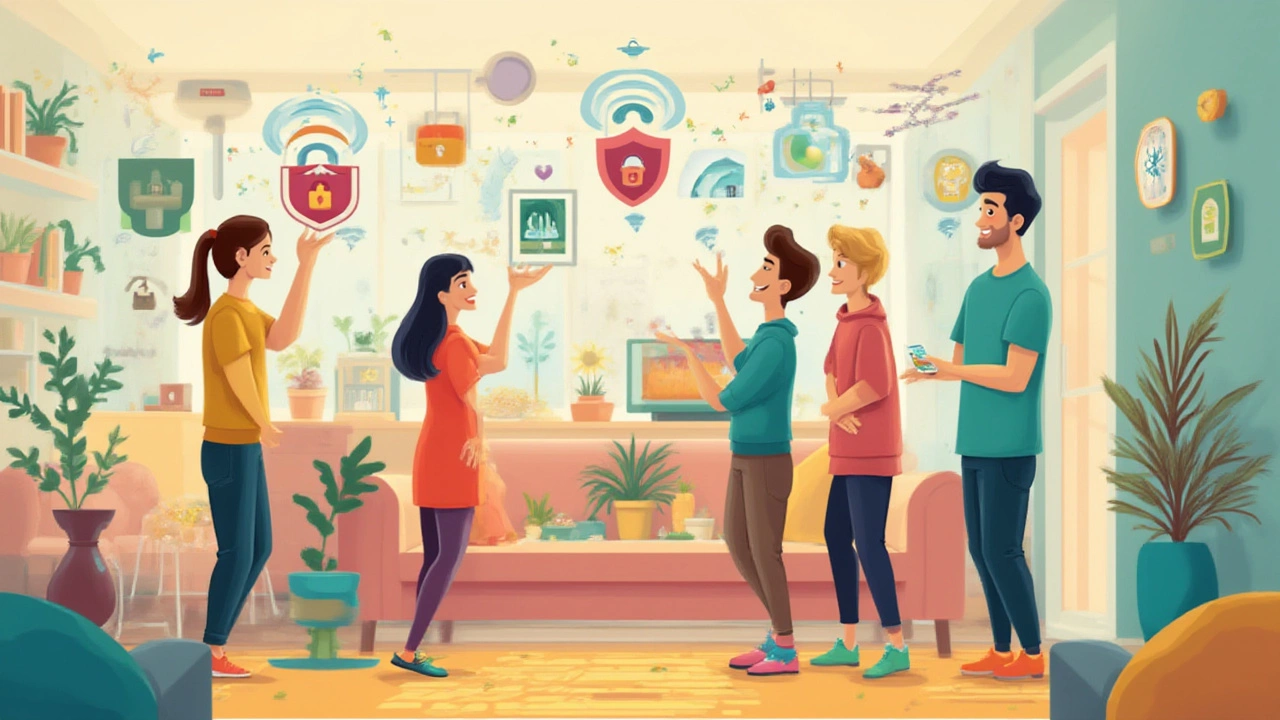
Smart Ways to Protect Your Wi-Fi Security Cameras
Now, here’s the good news: most of these risks aren’t deal-breakers. You can take control and keep your Wi-Fi security cameras working for you—not against you. Start with passwords. Ditch anything easy to guess and use a password manager to create and store really strong ones. Every camera, every account, every app, every time. And don’t forget two-factor authentication—many big brands offer this now. Yes, that extra step is a hassle, but it makes your cameras 10x harder to break into.
Keep your camera firmware updated. Those little pop-ups nagging you to update actually mean something. Most companies push updates, but you have to install them—so don’t ignore that red dot on your app. Make it a monthly habit to check for updates. And if your camera stops getting updates? It might be time for a replacement or at least limit its use to less private areas.
Your Wi-Fi network needs its own armor. Use WPA3 encryption (check your router; if it doesn’t have it, consider upgrading—it’s worth it). Hide your network SSID if you aren’t actively connecting a new device, and create a separate network just for smart home gadgets. That way, even if someone cracks the camera, your personal data stays safer. Fun fact: modern routers also let you set up guest networks—use those for any devices you don’t trust entirely.
Think about where you put your cameras. Avoid pointing them at windows or public spaces if you don’t want to record everyone walking their dog. The higher and less obvious the placement, the harder it is for someone to mess with your cameras. If you need outside coverage, pick weatherproof models with tamper alerts. Some cameras will send you a ping if someone tries to move or disable them. If your camera offers it, turn on the “privacy shutter”—basically a camera eyelid that closes when you’re home.
As for storage, the strongest systems let you pick between local, cloud, or both. Look for cloud services that offer end-to-end encryption—meaning, not even the company can see your videos. Back up footage you’re worried about, but don’t keep daily life moments floating in the cloud forever. And get in the habit of clearing out old footage regularly.
- Wi-Fi security cameras bring risks—secure them with unique passwords and regular software updates.
- Set up two-factor authentication whenever possible.
- Use network encryption and segment smart devices onto a guest network.
- Regularly check and manage who can access your cameras and footage.
- Pick placement wisely to avoid tampering and oversharing.
Remember those neighbor-sharing features we talked about? Use them sparingly. Make sure your camera app makes you approve every share—don’t let it send footage automatically. When in doubt, download clips and send them privately and securely. Things in public groups and threads have a way of spreading fast. And if your system supports facial or motion detection, tweak the sensitivity so you’re not bombarded with useless alerts (and less likely to ignore the ones that matter).
Don’t trust default settings. Go through your camera’s privacy options line by line, turn off anything you don’t need, and look for device logs that show who’s accessed the camera, and when. Some cameras even email you if someone logs in from a new device—turn that on. If you’re worried about jamming or power outages, pair your Wi-Fi setup with at least one battery-powered, cellular backup camera—it’s a little extra money, but it’s cheap insurance against a total blackout.
Finally, take a few minutes to read those privacy policies—not the whole thing, but at least the part where the company talks about what happens to your data. Some brands sell anonymous footage to train AI, while others promise everything is deleted after a few days. If privacy matters to you, pick your brand with care.
Wi-Fi cameras aren’t going anywhere—they’re smarter, more affordable, and easier to use than ever. But as your smart home evolves, it’s on you to make sure the technology is working for your family, not for strangers on the other side of the world. Being an informed, active user is what keeps “security” in security camera.



